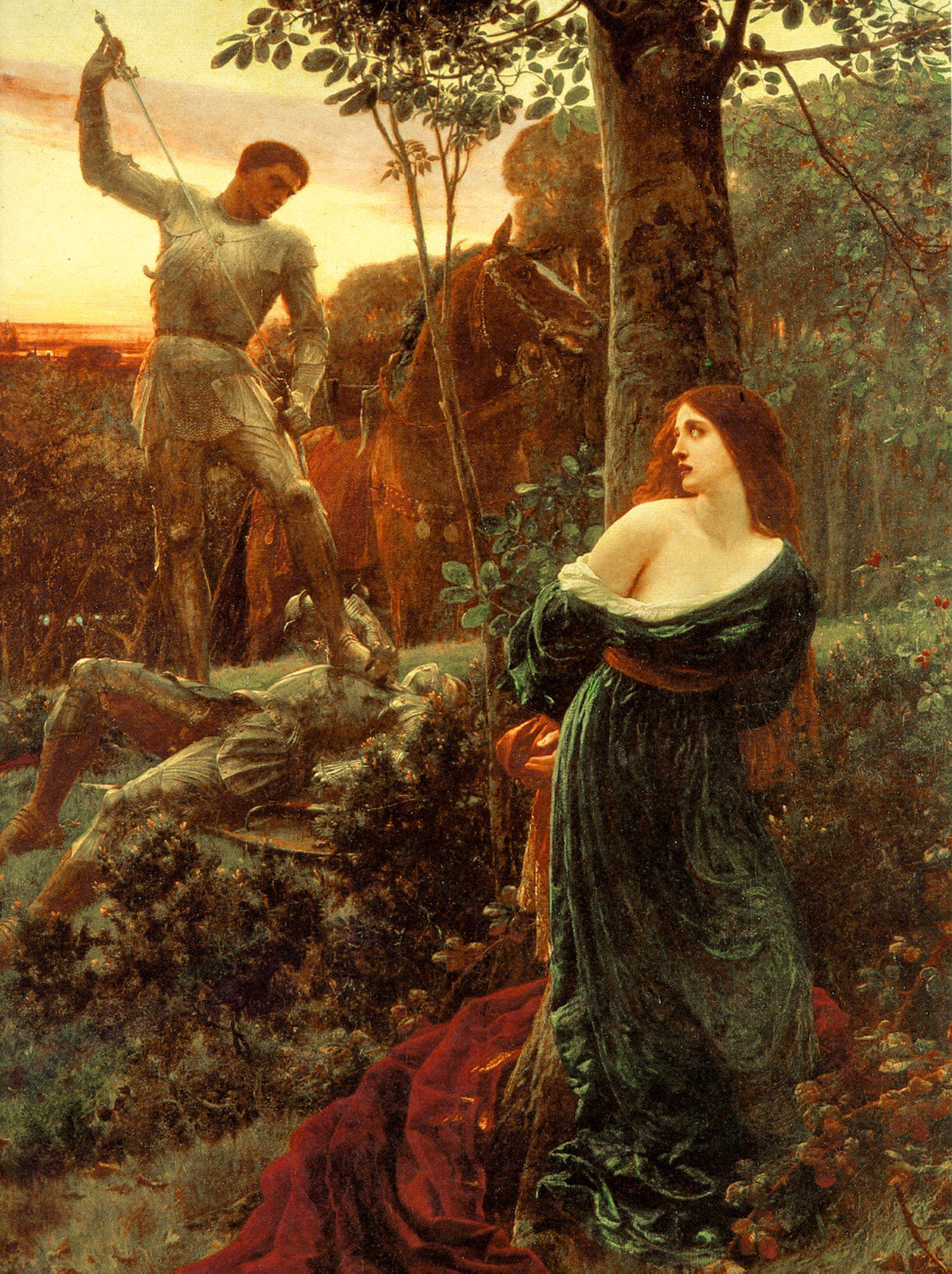

In origin, the term chivalry means “horsemanship”, formed in Old French, in the 11th century, from chevalerie (horsemen, knights), itself from the Medieval Latin caballarii, the nominative plural form of the term caballārius. God Speed by English artist Edmund Leighton, 1900: depicting an armoured knight departing for war and leaving his beloved.

The code of chivalry, as it stood by the Late Middle Ages, was a moral system which combined a warrior ethos, knightly piety, and courtly manners, all combining to establish a notion of honour and nobility. Over time, its meaning in Europe has been refined to emphasize more general social and moral virtues. Originally, the term referred only to horse-mounted men, from the French word for horse, cheval, but later it became associated with knightly ideals.

The term “chivalry” derives from the Old French term chevalerie, which can be translated as “horse soldiery”. It arose in the Carolingian Empire from the idealisation of the cavalryman-involving military bravery, individual training, and service to others-especially in Francia, among horse soldiers in Charlemagne’s cavalry. The code of chivalry that developed in medieval Europe had its roots in earlier centuries. All of these were taken as historically accurate until the beginnings of modern scholarship in the 19th century. The ideals of chivalry were popularized in medieval literature, particularly the literary cycles known as the Matter of France, relating to the legendary companions of Charlemagne and his men-at-arms, the paladins, and the Matter of Britain, informed by Geoffrey of Monmouth’s Historia Regum Britanniae, written in the 1130s, which popularized the legend of King Arthur and his knights of the Round Table. It was associated with the medieval Christian institution of knighthood knights’ and gentlemen’s behaviours were governed by chivalrous social codes. The “code of chivalry” is a product of the Late Middle Ages, evolving partly from an idealization of fighting knights and partly from ideals of courtly love.Ĭhivalry, or the chivalric code, is an informal and varying code of conduct developed between 11. University of Heidelberg, Wikimedia Commons Rather, he argues, European neo-romantics in the late 19th century adapted the word to define ideal male behavior.Konrad von Limpurg as a knight being armed by his lady in the Codex Manesse (early 14th century). Kaeuper argues that our current understanding of chivalry as a code of proper masculine behavior, particularly in relation to women, has little to do with real knights in the Middle Ages. Our king would protect you,’” Kaeuper says.

“In a way it’s like mafia tactics: ‘You think the king of France can protect you? He can’t. That style of warfare was still endemic during the Hundred Years’ War of the 14th and 15th centuries, when England and France fought each other, laying waste to the countryside. Kaeuper says few medieval texts describing chivalry warned against burning or looting towns or raping common women. “Ordinary women, shepherdesses, are just rather like for sport.” “There’s a lot of courtesy-you want to be able to speak well to ladies, defend ladies,” Wollock says. Yet even when knights did follow a code of chivalry as they understood it, these ideas about honor and good behavior focused mostly on concern for the noble class that knights were part of, often at the expense of the poor.


 0 kommentar(er)
0 kommentar(er)
